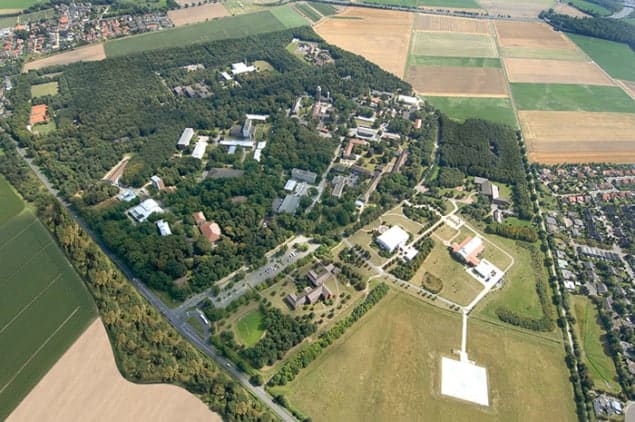
The time kept by atomic clocks in France and Germany has been compared for the first time using a new 1400 km optical-fibre link between labs in Paris and Braunschweig. Hailed as the first comparison of its kind made across an international border, the link has already shown that two of the most precise optical atomic clocks in Europe agree to within 5 × 10–17. The link is the first step towards a European network of optical clocks that will provide extremely stable and precise time signals for research in a number of scientific fields including fundamental physics, astrophysics and geosciences.
An optical atomic clock works by keeping a laser in resonance with an electronic transition between energy levels in an atom or ion – with the “ticks” of the clock being the frequency of the laser light. As with any clock, it is important to be able to compare the frequencies of two or more instruments to ensure that they are working as expected. Comparisons are also important for basic research, particularly for testing the fundamental physical laws and constants that are involved in the operation of atomic clocks.
Both of the clocks are based on the same optical transition in strontium atoms, which are held in optical lattices created by laser light. The clock at the LNE-SYRTE laboratory in Paris operates at an uncertainty of about 4.1 × 10–17 and the clock at the PTB Braunschweig laboratory at 1.8 × 10–17.
Gravitational shift
If they were side by side, the clocks would tick at exactly the same frequency. However, there is a 25 m difference in the elevation between the two locations, which means that the Earth’s gravitational field is not the same for both clocks – causing them to tick at slightly different frequencies. This gravitational redshift was confirmed by the link, which can detect differences in elevation as small as 5 m.
The link comprises two commercial-grade optical fibres that run between Paris and Braunschweig. The route is not the shortest distance between the two clocks, but rather takes a significant southward detour via Strasbourg on the French–German border. For every 1020 photons that begin the journey, only one would arrive at its destination. This 200 dB attenuation is compensated for by 10 or so special amplifiers along the route. The German portion of the link runs 710 km from Braunschweig to Strasbourg and is dedicated to connecting the clocks. The French portion, however, uses 705 km of an active telecommunications link that also carries Internet traffic. As a result, two different approaches were needed to amplify the clock signals on either side of the border.
Second connection
The optical clock at PTB Braunschweig is already linked to the Max Planck Institute for Quantum Optics (MPQ) in Garching near Munich. This is done via a 920 km pair of optical fibres, and researchers at the MPQ plan to use the clock signal to make extremely precise spectroscopy measurements. A further expansion of this network would provide researchers in other labs in Europe with access to high-precision clock signals.
Applications could include measuring a fundamental physics constant in several different locations – to confirm that the value of the constant is indeed constant. Other possible uses include precision measurements in spectroscopy that look for evidence of physics beyond the Standard Model and making very precise measurements of the shape and density of the Earth.
The construction and testing of the link are described in Nature Communications.



